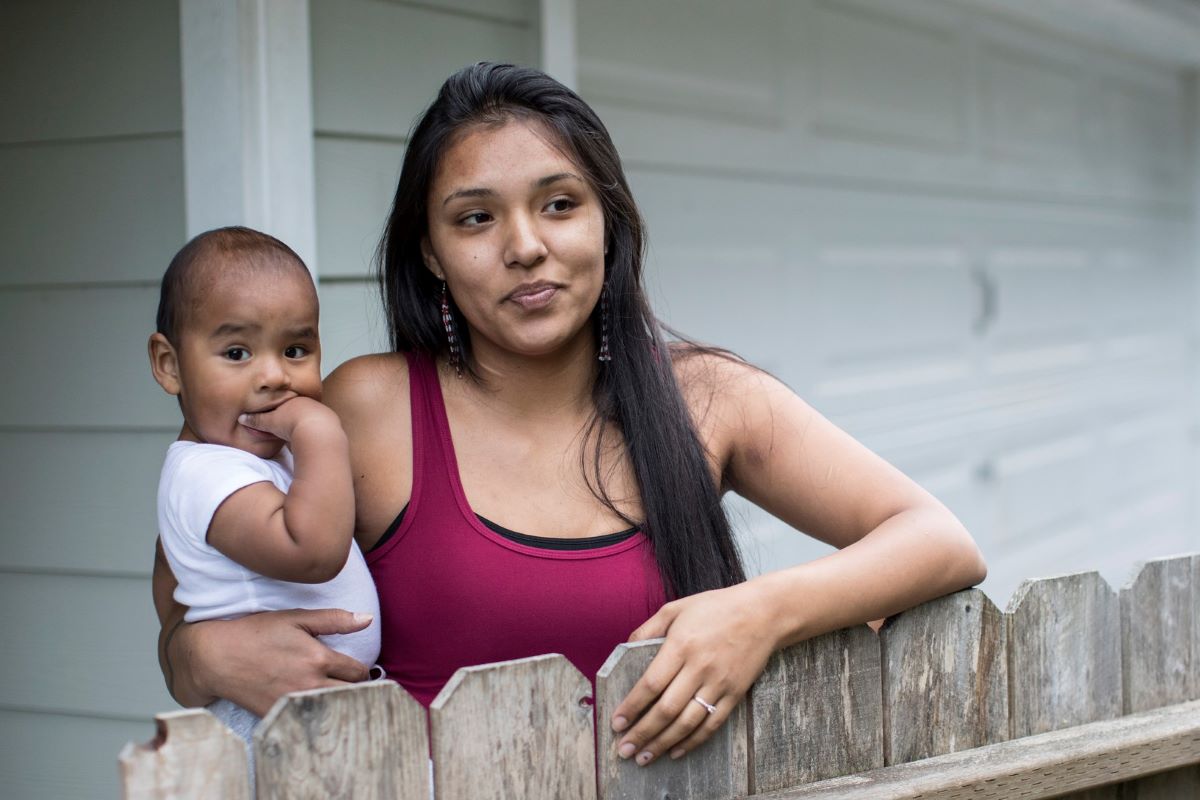
Maternal health outcomes in the United States are abysmal compared to other member countries of the Organisation for Economic Co-operation and Development (OECD).1 Our nation’s poor outcomes are rooted in part in systemic and structural discrimination.2 Black and Brown birthing people have reported a perceived health care discrimination at an average rate of 48.35% compared to White birthing parents, at 27.6%.3
One community that lives under the pressure of social and environmental inequity is Houston, Texas. Examining the outcomes of Hurricane Harvey in 2017, Mendez-Figueroa et al evaluated the association of the hurricane’s effects with the morbidity of birthing people and their newborns. Their findings supported the hypothesis that major climate change events such as hurricanes significantly increase the likelihood of adverse health outcomes like hypertensive disorders and death for both parents and infants. Research has also shown that there are racial inequities for Black and Brown birthing parents.5 Those who identify as Black or a person of color who also live in communities with lower socioeconomic status often experience a hefty compounding reality.4,5 The damage from Hurricane Harvey largely affected predominately Black and Brown communities.6 These effects — from a hurricane that occurred nearly seven years ago — are still overwhelmingly present today. Houstonians are left with lingering questions of when true relief will come.7 Government may not be able to control the occurrence of natural disasters, yet its response to these life-altering events, or lack thereof, is consequential.
As concern for the negative health impacts of climate change heightens, it is the responsibility of bioethicists and those in the health justice sphere to examine the socioeconomic disadvantages to historically marginalized communities of delayed action. It is a continuous trend in research that these historically marginalized populations are repeatedly exposed to — and often hit the hardest by — negative socioecological factors that result in poorer health outcomes.8 Their well-being is now at an elevated risk as the effects of climate change continue to mount. As the scope of environmental pressures on maternal health widens, the role of climate change becomes more apparent.
An uncertain future
What does this mean for future generations who must live with the aftermath of today’s inaction?
Climate change already negatively affects those who have not set foot into the world yet. Heat stress, one component of this widening scope of climate pressures, intertwines with maternal, fetal, and child health in harrowing ways.9 While women and disabled people are most at risk of the effects of heat stress, pregnant and birthing people and young children are also disproportionately at a health disadvantage. There are now more instances of environmental threats such as natural disasters and heat stress.8,10 This means that genetic anomalies in fetal development have become a growing concern.9,11 Poor health outcomes like preterm birth, low birthweight, preeclampsia, gestational diabetes, and stillbirth are aggravated when exposed to ambient heat.12,13 Need further proof? Consider reading what birthing parents in the hottest city on Earth must navigate because of heat stress. The consequences of climate change in other nations leave parents, children, and the public health workforce all over the world with great uncertainty about their future quality of life.
Pathways to maternal health equity and climate justice
What can we do to address climate change in maternal and child health outcomes?
Recognize the role that the social determinants of health play in a community’s lived experiences.
Where we are born, live, work, and play shapes our health outcomes. Our built environment influences us. Turning an eye away from these factors is an attempt to sweep structural discrimination under the rug. Development of any proposed solutions is futile if the many social determinants of health are not addressed.
Collaborate across disciplines and sectors.
Public health research findings should be supported by policy. Health policy should promote wellness and justice. Evidence from the public health field should be used as a guide for policymakers. Qualitative and quantitative data analytics provide a great deal of evidence for decision-making. An interdisciplinary approach (integrating research, health policy, social science, and bench science) pushed by multisectoral action (including participation from economic, transportation, housing, and business sectors) and factually supported by climate observation tools (such as geographic information systems, platforms such as Climate Data Online, and weather models) can help leaders make equitable social policy decisions that minimize health inequities.
Leverage new technologies like Artificial Intelligence, Machine Learning, and Natural Language Processing (NLP) with a socially conscious approach.
NLP’s potential positive value in climate change mitigation has been explored,14 as well as its usefulness in maternal health. Heat stress has been linked to preterm labor and preeclampsia during the first and third trimesters.15 Both are common, and preeclampsia is growing to be a leading cause in maternal mortality. Using NLP in electronic health records to catch the early signs of a hypertensive disorder can mean fewer deaths. Manually sorting through these data can be time consuming and leaves room for omission, but applying tools like NLP can save time and lives by analyzing large amounts of qualitative data and contextualizing patient responses that may expose risk factors.
A call to climate action
Climate change and its negative effects will become more apparent in the United States’ maternal and child morbidity and mortality rates. Just as policy solutions are being adopted to address health care delivery issues, we must also take policy action to reverse this troubling trend. It is crucial that policymakers and elected officials work in correspondence with information presented by public health workers to understand the implications of climate change on birthing people and children.
To learn more about NLP and its usefulness in promoting maternal health, join us May 18 for the Maternal Health Equity Workshop: From Story to Data to Action. Check out the AAMC’s Maternal Health Equity Workshop Resources for more information.
